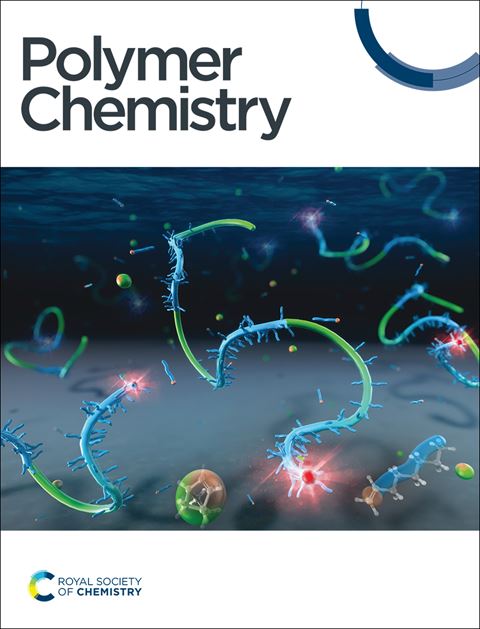左旋葡萄糖酮的立体选择性缩聚制备可水降解生物聚合物
IF 4.1
2区 化学
Q2 POLYMER SCIENCE
引用次数: 0
摘要
以纤维素为原料,成功合成了高度立体化学控制的左旋葡萄糖酮(LGO)聚合物。自20世纪70年代被发现以来,由于其具有多种官能团作为聚合物形成的键,因此在有机化学中广泛研究了LGO的反应性。然而,以往大多数由LGO合成聚合物的方法缺乏对区域和立体化学的精确控制,使得LGO的立体选择聚合成为一个持续的挑战。虽然LGO中的酮类在聚合前通常会被还原,但设计了一种新的LGO聚合物,该聚合物含有与二羧基二肼缩合得到的C=N键。核磁共振测量表明,在高立体选择性的条件下,缩合反应生成了e -异构体。这种选择性从模型化合物扩展到聚合物合成,实现了高E / Z选择性。所得聚合物具有旋光度(高达+89),表明其具有成为手性聚合物的潜力。尽管这些聚合物对许多溶剂表现出很高的耐受性,但它们在水中通过简单的化学处理即可降解。提出的方法促进了可持续、高性能材料的开发,可以满足环境和工业需求。本文章由计算机程序翻译,如有差异,请以英文原文为准。
Stereoselective Polycondensation of Levoglucosenone leading to Water-Degradable Biopolymers
Highly stereochemically controlled polymers were successfully synthesized from levoglucosenone (LGO), derived from cellulose. Since its discovery in the 1970s, the reactivity of LGO has been widely studied in organic chemistry, owing to its diverse functional groups that serve as linkages for polymer formation. However, most of the previous methods for synthesizing polymers from LGO lacked precise control over regio- and stereochemistry, making stereoselective polymerization from LGO a persistent challenge. Although the ketone moiety in LGO is typically reduced before polymerization, a new LGO polymer was designed, containing a C=N bond obtained by condensation with dicarboxylic dihydrazide. NMR measurements revealed that condensation occurred with high stereoselectivity to produce the E-isomer. This selectivity extended from the model compound to polymer synthesis, achieving high E / Z selectivity. The resulting polymer exhibited optical rotation (up to +89), indicating its potential as a chiral polymer. In spite of these polymers showed high tolerance toward many solvents, they were degradable in water with a simple chemical treatment. The proposed approach facilitates the development of sustainable, high-performance materials that can address both environmental and industrial needs.
求助全文
通过发布文献求助,成功后即可免费获取论文全文。
去求助
来源期刊

Polymer Chemistry
POLYMER SCIENCE-
CiteScore
8.60
自引率
8.70%
发文量
535
审稿时长
1.7 months
期刊介绍:
Polymer Chemistry welcomes submissions in all areas of polymer science that have a strong focus on macromolecular chemistry. Manuscripts may cover a broad range of fields, yet no direct application focus is required.
 求助内容:
求助内容: 应助结果提醒方式:
应助结果提醒方式:


